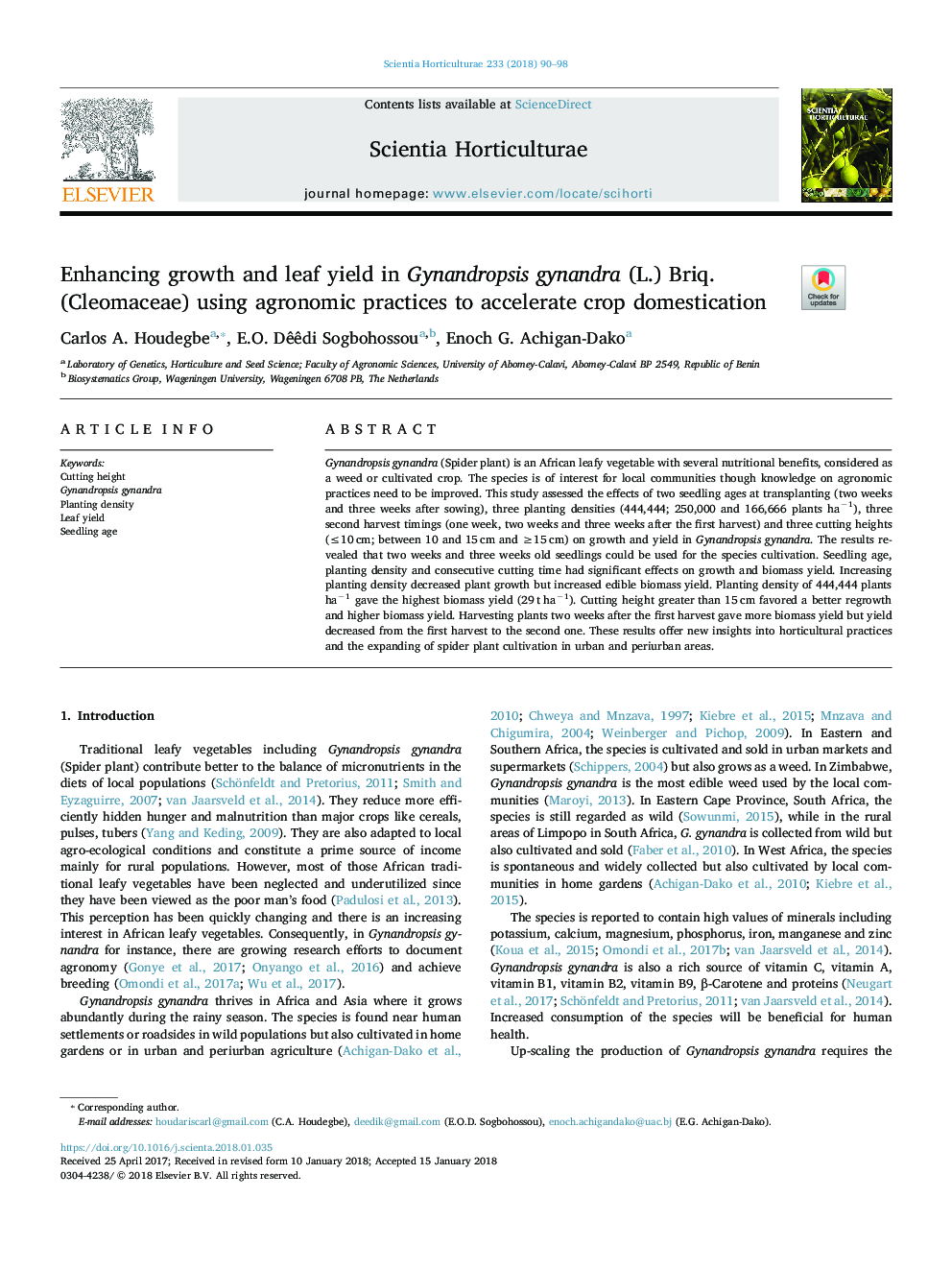| Article ID | Journal | Published Year | Pages | File Type |
|---|---|---|---|---|
| 8892835 | Scientia Horticulturae | 2018 | 9 Pages |
Abstract
Gynandropsis gynandra (Spider plant) is an African leafy vegetable with several nutritional benefits, considered as a weed or cultivated crop. The species is of interest for local communities though knowledge on agronomic practices need to be improved. This study assessed the effects of two seedling ages at transplanting (two weeks and three weeks after sowing), three planting densities (444,444; 250,000 and 166,666 plants haâ1), three second harvest timings (one week, two weeks and three weeks after the first harvest) and three cutting heights (â¤10â¯cm; between 10 and 15â¯cm and â¥15â¯cm) on growth and yield in Gynandropsis gynandra. The results revealed that two weeks and three weeks old seedlings could be used for the species cultivation. Seedling age, planting density and consecutive cutting time had significant effects on growth and biomass yield. Increasing planting density decreased plant growth but increased edible biomass yield. Planting density of 444,444 plants haâ1 gave the highest biomass yield (29â¯tâ¯haâ1). Cutting height greater than 15â¯cm favored a better regrowth and higher biomass yield. Harvesting plants two weeks after the first harvest gave more biomass yield but yield decreased from the first harvest to the second one. These results offer new insights into horticultural practices and the expanding of spider plant cultivation in urban and periurban areas.
Related Topics
Life Sciences
Agricultural and Biological Sciences
Horticulture
Authors
Carlos A. Houdegbe, E.O. Dêêdi Sogbohossou, Enoch G. Achigan-Dako,
